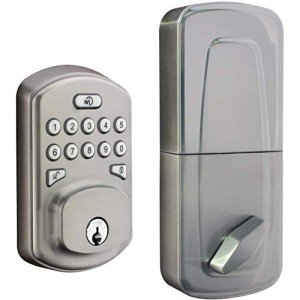This Story Behind Contemporary Lighting UK Is One That Will Haunt You Forever!
Contemporary Lighting in the UK: Transforming Spaces with Illumination
Lighting plays an important function in defining the atmosphere and functionality of any space. In the UK, contemporary lighting has actually become a considerable style element, using innovative services that mix aesthetic appeals with functionality. This article looks into the various styles, products, and innovations shaping contemporary lighting, along with pointers for choosing the most suitable fixtures for different settings.
The Evolution of Contemporary Lighting
Contemporary lighting in the UK shows the changing tastes and technological developments in design. It encapsulates a large selection of styles, including:
Minimalist: Characterized by simpleness and tidy lines, minimalist lighting fixtures focus on form and function without unneeded decorations.
Industrial: Inspired by urban settings, industrial lighting integrates basic materials like metals and woods with vibrant designs, creating edgy, practical pieces.
Scandinavian: Known for its heat and simplicity, Scandinavian lighting often features soft colors and natural products, focusing on creating a comfortable atmosphere.
Smart Lighting: This modern pattern integrates technology with style, permitting users to control their lighting with mobile apps, voice commands, or automation systems.
To highlight the development and range in the field of contemporary lighting, consider the table listed below, which highlights crucial characteristics of various designs.
Style
Key Characteristics
Popular Materials
Perfect Spaces
Minimalist
Simple, practical styles
Metal, glass, wood
Modern homes, workplaces
Industrial
Raw, incomplete look
Steel, concrete, wood
Lofts, galleries
Scandinavian
Relaxing, warm visual appeals
Natural fibers, light wood
Living rooms, cafes
Smart
Integrated technology, automation
Varies widely
Homes, offices, retail spaces
Choosing Contemporary Lighting Fixtures
Picking the ideal lighting fixtures for a space requires careful consideration of several aspects. Here are crucial elements to bear in mind:
1. Purpose of the Space
Before choosing fixtures, consider the intended use of the location. Various functions require various types of lighting:
- Task Lighting: Focused illumination for activities such as reading, cooking, or studying. Examples consist of table lamps and under-cabinet lights.
- Ambient Lighting: General lighting that supplies total illumination. Ceiling lights and pendant fixtures fall under this classification.
- Accent Lighting: Designed to highlight particular functions or locations, such as artwork or architectural information. Wall sconces and mounted lights are typical options.
2. Style and Theme
The lighting ought to match the existing decor. please click the following website for fixtures that match or enhance the general style of the area, whether it's contemporary, rustic, or eclectic.
3. Size and Scale
Think about the proportion of the lighting fixtures relative to the space. A big chandelier might look stunning above a large dining table, while smaller pendant lights work well in compact settings.
4. Energy Efficiency
With rising energy costs and ecological concerns, selecting energy-efficient lighting alternatives is vital. LED lights are an outstanding choice, offering durability and lower energy usage.
5. Flexibility
In modern style, flexibility is key. Fixtures that can be changed or rearranged boost functionality, enabling users to create various environments as needed.
Popular Contemporary Lighting Brands in the UK
The contemporary lighting market in the UK boasts various brand names understood for their innovative designs and quality workmanship. Some significant mentions include:
- FLOS: An Italian brand name celebrated for its creative and renowned lights that typically double as pieces of art.
- Tom Dixon: A British designer recognized for his modern, industrial designs that beautifully incorporate metal and light.
- Anglepoise: Known for its flexible, practical lamps, best for a range of settings from office to innovative studios.
- John Lewis: Offers a variety of contemporary lighting options that deal with a wider audience, including affordable yet stylish choices.
Frequently Asked Questions about Contemporary Lighting in the UK
1. What is contemporary lighting?
Contemporary lighting refers to lighting designs and fixtures that reflect existing style trends, frequently defined by clean lines, innovative shapes, and the use of modern materials and technologies.
2. How do I choose the ideal lighting for my home?
Think about the purpose of the room, existing decoration, size of fixtures, energy effectiveness, and flexibility. Assess how each piece will contribute to the total ambiance and performance of your space.
3. What are some energy-efficient lighting options offered in the UK?
LED lights are the most prominent energy-efficient option, understood for their long life-span and low energy intake. Compact fluorescent lights (CFLs) and halogen bulbs are other options.
4. Where can I purchase contemporary lighting in the UK?
Contemporary lighting can be found in various retail outlets, both online and in physical stores. Significant retailers consist of John Lewis, Habitat, and specialized lighting stores.
5. Can contemporary lighting work in traditional spaces?
Absolutely! Contemporary lighting can boost traditional spaces when chosen thoughtfully. Choosing fixtures with a balance between modern and traditional elements can develop a harmonious design.
Contemporary lighting in the UK represents more than just illumination; it embodies style innovation and imagination, changing spaces and improving performance. As trends continue to evolve, property owners and designers alike can explore an expansive variety of styles and innovations, guaranteeing that every room bursts with life, warmth, and character. By thinking about the necessary factors described in this short article, one can curate a collection of lighting fixtures that resonates with individual design and satisfies practical needs, ultimately shaping comfy and aesthetically appealing environments.
